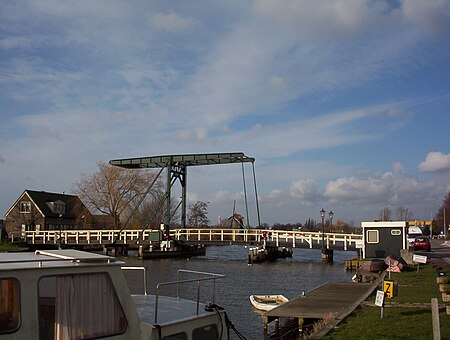Vijfhuizen

Vijfhuizen is a village in the Dutch province of North Holland. It is a part of the municipality of Haarlemmermeer, and lies about 4 km southeast of Haarlem. In January 2011, the town of Vijfhuizen had 4387 inhabitants. The built-up area of the town was 0.48 km2, and contained 728 residences. The wider statistical area of Vijfhuizen has a population of around 2800.Vijfhuizen is located on the northwest side of the Haarlemmermeer on the ring canal opposite Haarlem. To the south of it lies Cruquius, and to the north, on the ring dike, Nieuwebrug. The characteristic Vijfhuizen bridge connects the village with Haarlem and was completely renewed a few years ago. For a number of years there has been a cycle path along the Geniedijk to Hoofddorp. The roads east of the village run dead on the Polderbaan of Schiphol.
Excerpt from the Wikipedia article Vijfhuizen (License: CC BY-SA 3.0, Authors, Images).Vijfhuizen
Zijdewinde, Haarlemmermeer
Geographical coordinates (GPS) Address Nearby Places Show on map
Geographical coordinates (GPS)
| Latitude | Longitude |
|---|---|
| N 52.35 ° | E 4.6833333333333 ° |
Address
Zijdewinde 3B
2141 VA Haarlemmermeer
North Holland, Netherlands
Open on Google Maps










